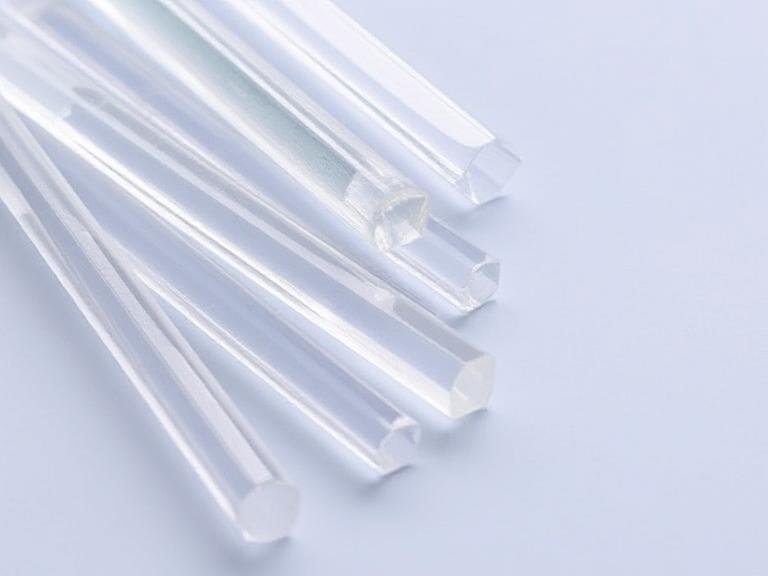Table of Contents Quartz Rods Used For
- Introduction to Quartz Rods
- Types of Quartz Rods
- Industrial Applications of Quartz Rods
- Laboratory and Scientific Use
- Quartz Rods in the Semiconductor Industry
- Benefits of Quartz Rods
- About Jiurui Quartz Products Co., Ltd.
- Summary Table
- References
Introduction to Quartz Rods Used For

Quartz rods are solid cylindrical components made from high-purity quartz glass, known for their exceptional thermal resistance, high purity, and superior optical clarity. Used across a variety of high-tech industries, quartz rods play a critical role in environments where other materials fail under extreme conditions.
Types of Quartz Rods
Quartz rods are available in multiple types depending on their intended use and quartz grade. Common classifications include:
- JGS1 (UV Grade Quartz): Excellent transmission in ultraviolet ranges; ideal for photolithography and UV applications.
- JGS2 (Optical Quartz): Superior transmission in visible light; used in high-precision optics.
- JGS3 (IR Grade Quartz): Infrared transmitting quartz; often used in thermal imaging or heating systems.
Industrial Applications of Quartz Rods
Quartz rods are essential components in various industrial applications due to their thermal stability, chemical resistance, and dielectric strength. Common uses include:
1. High-Temperature Furnaces
- Used as support rods or spacers due to resistance to temperatures over 1,000°C.
- Excellent mechanical strength even under thermal cycling conditions.
2. Chemical Processing
- Quartz rods resist corrosion from acids, alkalis, and aggressive solvents.
- Used in reaction chambers, chemical tanks, and glass lining for pipes.
3. UV and IR Lamps
- Serve as protective sleeves or housings for UV-C disinfection lamps.
- JGS3 quartz rods are employed in IR heating elements for industrial drying systems.
Laboratory and Scientific Use
Quartz rods are widely used in research laboratories, universities, and testing centers for their purity and inertness:
- Fabricated into quartz stirrers, crucibles, or sample holders.
- Excellent for spectrometry, chromatography, and reaction vessel components.
- Compatible with high-vacuum and high-pressure environments.
Quartz Rods in the Semiconductor Industry
Quartz rods are indispensable in semiconductor fabrication due to their contaminant-free nature and resistance to plasma environments:
- Used in wafer processing equipment and as insulators.
- Integrated into diffusion tubes, etching systems, and CVD reactors.
- Maintain dimensional stability under rapid thermal processing (RTP).
Benefits of Quartz Rods
Quartz rods provide numerous advantages that make them ideal for demanding applications:
- High Thermal Resistance: Can endure continuous service at high temperatures.
- Chemical Inertness: Non-reactive with most chemicals, ideal for corrosive settings.
- Low Thermal Expansion: Minimizes stress and fracture risks during thermal cycling.
- High Purity: Reduces contamination risk in sensitive applications like semiconductors.
- UV and IR Transparency: Critical in optical, photonic, and lamp industries.
About Jiurui Quartz Products Co., Ltd.

Founded in 2010, Donghai Jiurui Quartz Products Co., Ltd. is a trusted manufacturer of high-quality quartz components. With over 15 years of experience, Jiurui serves research laboratories, semiconductor facilities, and high-tech industries around the world. Their products adhere to the strictest international standards such as JGS1, JGS2, and JGS3.
Key Offerings:
- Quartz Tubes & Rods: In various diameters and lengths for diverse applications.
- Quartz Plates & Discs: Optical-grade or UV/IR transmission as needed.
- Quartz Flanges & Joints: Custom components for lab and industrial fittings.
- Quartz Laboratory Ware: Crucibles, beakers, and custom reaction vessels.
- Custom Quartz Components: Tailored to customer specifications and drawings.
Jiurui’s expertise ensures reliability and precision, making them a preferred supplier for complex and high-specification quartz components.
Summary Table
| Application Area | Use of Quartz Rods | Benefits |
|---|---|---|
| Industrial Furnaces | Spacers, rods in heating elements | Heat resistance, dimensional stability |
| Chemical Processing | Reaction vessels, pipe linings | Corrosion resistance, purity |
| Laboratory Equipment | Sample holders, crucibles | High purity, inert to reactions |
| Semiconductor Fabrication | Diffusion tubes, insulators | Low contamination, thermal resistance |
| Lighting Systems | UV/IR lamp sleeves | Optical clarity, temperature endurance |